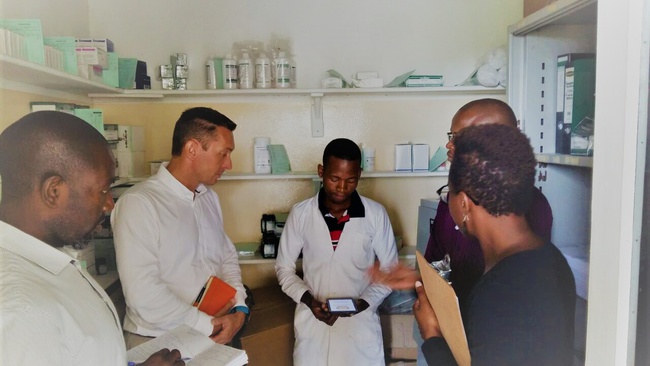SIGLUS - Sistema de Informação para Gestão Logística nas Unidades Sanitárias (Logistics Management and Information System for Health Facilities)
Connectivity in low-resource areas
In 2015, the Clinton Health Access Initiative partnered with the Ministry of Health’s Central Medical Stores (CMAM) to pilot a system called “eSMS”. Using OpenLMIS, an open-source management system, eSMS allowed health workers in 9 health facilities in Maputo province to use tablet computers and 2G internet from local cellular service providers to track commodity consumption, receive stock level alerts, generate reports, & make commodity requisitions to district & provincial levels. In 2016, CHAI, UNFPA, & GHSC-PSM added an addition 25 health centers. And in early 2017, support of the pilot program transitioned from CHAI to USAID GHSC-PSM. The transition came with two changes: a new name to capture its capability & an expansion of the pilot to 115 additional health facilities across four additional provinces. USAID GHSC-PSM also provided small solar panels to health centers which lacked electricity to ensure tablets remain charged.
OpenLMIS 2.0, 7" tablets, 2G internet, solar panels
SIGLUS unifies & modernizes a series of tools that had previously existed only on paper & required manual updating and submission. The electronic versions of stock cards & requisition forms mirror the paper forms to allow for rapid training & minimize confusion among health workers. SIGLUS automatically produces alerts for overstocks, expiring products, low stock, & stockouts. All the data introduced in the system syncs into a web-based portal which feeds up to the district, provincial, & national databases.
As of July 2017, GHSC-PSM trained 115 health center workers, leading to 149 health facilities (about ten percent of all health facilities in the country) using SIGLUS. Based on health-center level data, district-level decision-makers can move medications from one health center to another.
Though still too early to measure stockouts and requisitions, the system has been fully embraced by CMAM, with a goal of expanding to half of all health facilities using SIGLUS by 2020.
The largest challenge has been hardware management. Though GHSC-PSM procures the tablets on behalf of the government, the government doesn't currently have the financial capability to maintain or replace tablets. GHSC-PSM also finances internet access for the tablets (approximately $3.50 per tablet per month). Finally, staff turnover among health center staff leads to institutional memory loss, resulting in a constant need to train government staff on the system.
The nature of OpenLMIS's open-source software is such that the product is replicable and modifiable in other countries to meet their unique health data logistics management needs. In fact, GHSC-PSM in Panama and Suriname have requested to use SIGLUS, leading to cost-sharing and shared benefits.
OpenLMIS has interoperability with other health-related systems such as DHIS2 (District Health Information System), which is currently used in 47 countries, and OpenMRS (Open Medical Record System).
